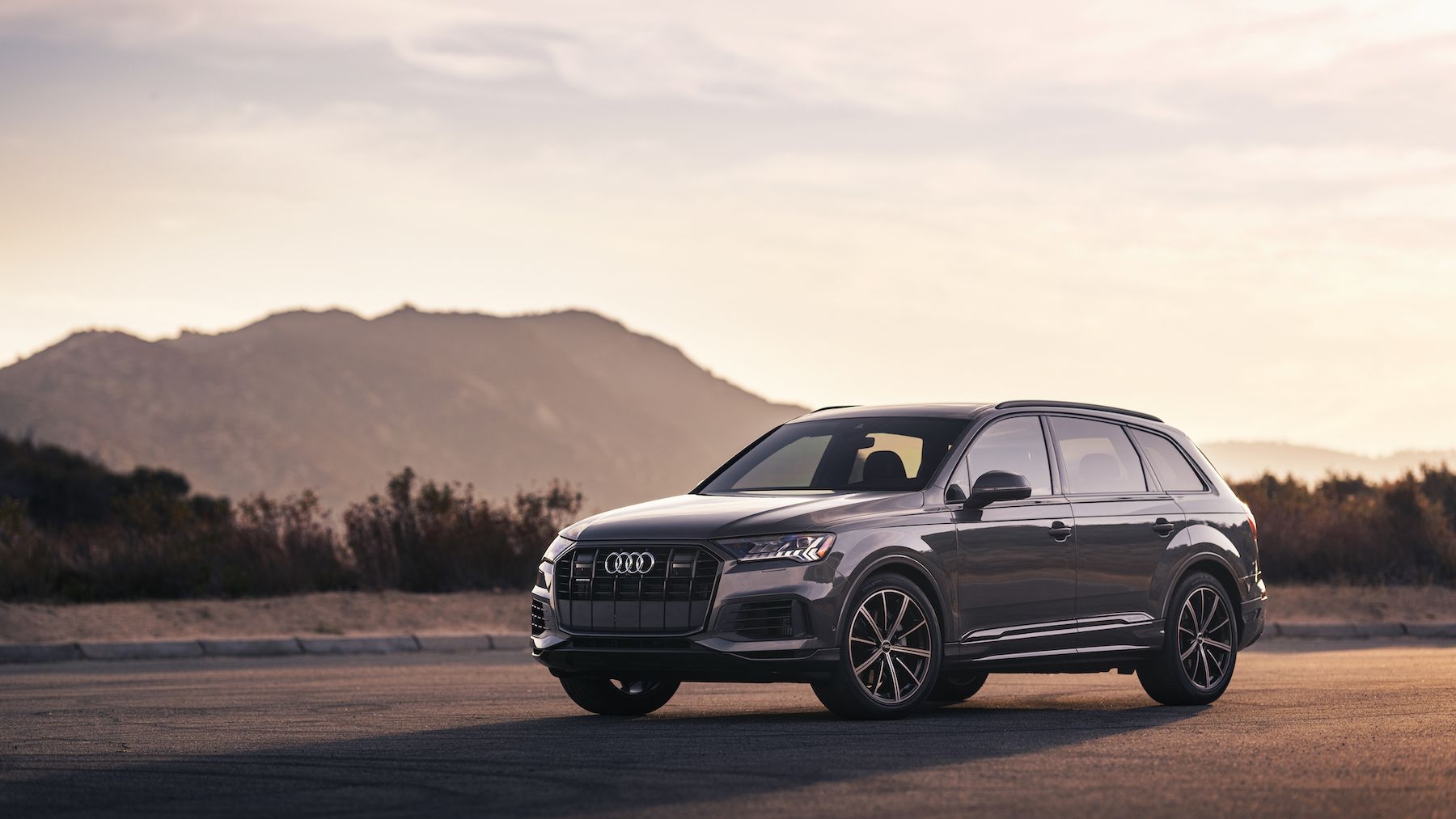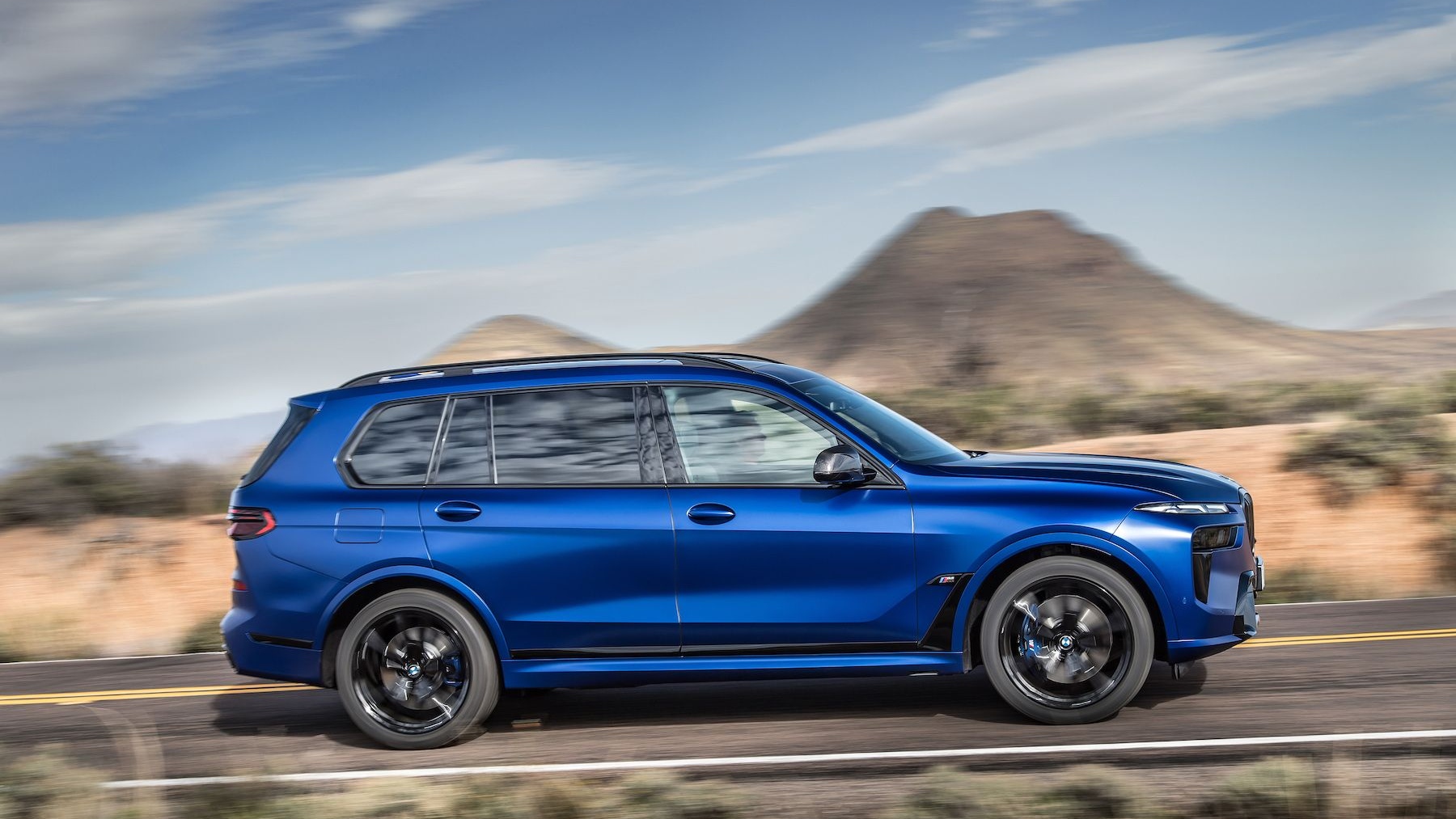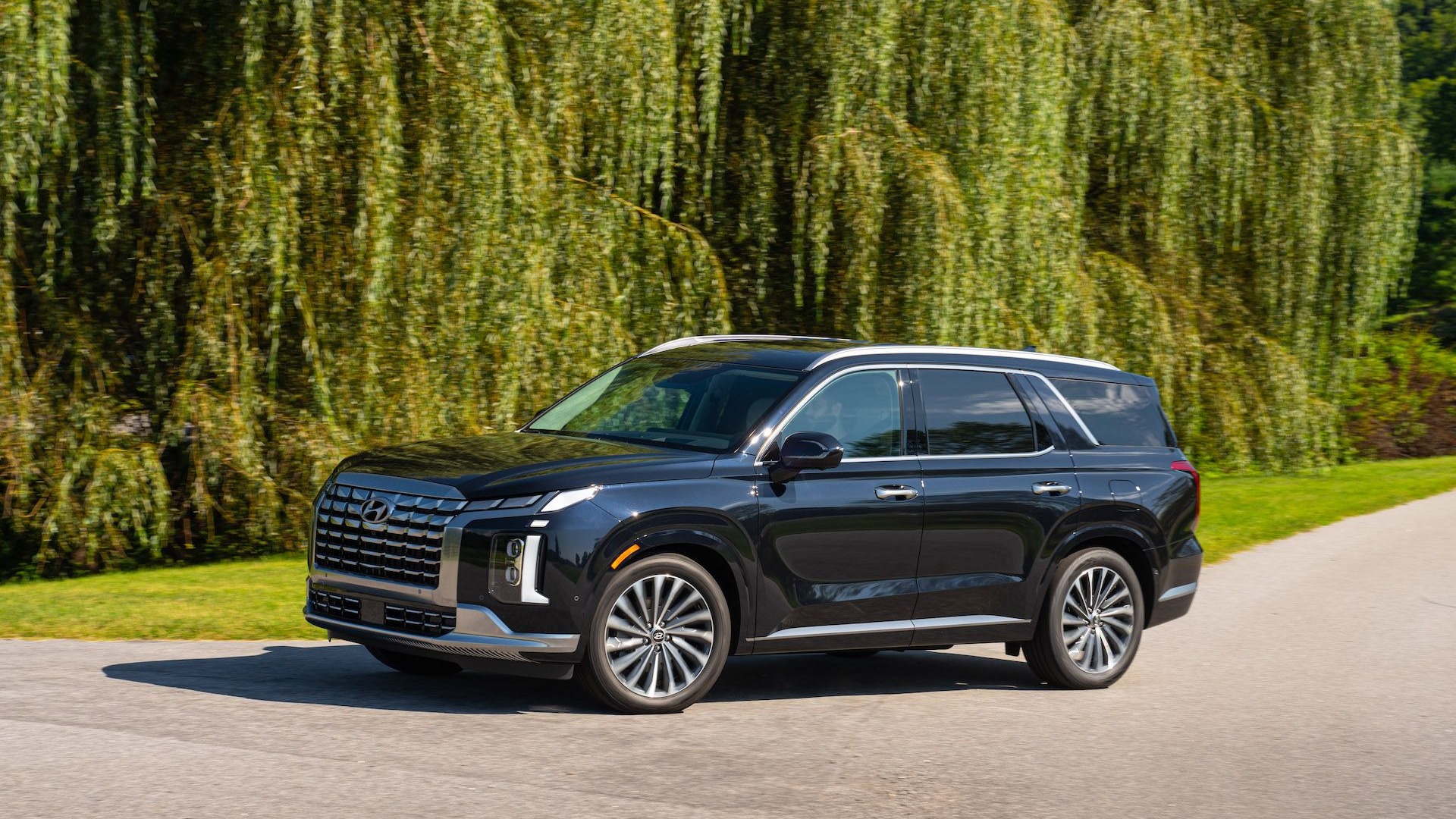A plug-in hybrid version of the new Q7 SUV is coming next year but Audi is yet to confirm just what engine will be used for the vehicle’s internal combustion component. At the Geneva Motor Show back in March, Audi showed off a Q7 plug-in hybrid equipped with a turbocharged 3.0-liter V-6 diesel. Now, the automaker has unveiled a version fitted with a turbocharged 2.0-liter four-cylinder gasoline mill.
The latest version is called the Q7 e-tron 2.0 TFSI quattro (the previous was a Q7 e-tron 3.0 TDI quattro), and right now it’s only been confirmed for few select Asian markets such as China, Japan and Singapore. The layout of the plug-in hybrid system is common to the diesel-based model unveiled in Geneva. The internal combustion engine sits up front while a disc-shaped electric motor is sandwiched between the engine and the vehicle’s eight-speed automatic transmission. Drive is then routed to all four wheels via a quattro all-wheel-drive system.
Drive can come from either the engine or electric motor, but when working together the peak output is an impressive 367 horsepower and 516 pound-feet of torque. This is enough for 0-62 mph acceleration in just 5.9 seconds and a top speed of just under 140 mph.
Audi says the Q7 e-tron 2.0 TFSI quattro will return a fuel economy of 94.1 mpge and in all-electric mode should be able to cover close to 33 miles. With both the engine and motor working, total range rises to 633 miles. The vehicle’s battery is a 17.3-kWh lithium-ion unit, and as with most plug-in hybrid vehicles the battery can be charged up at home or on the run using the engine or brake energy regeneration (the motor essentially turns into a generator, helping slow down the vehicle while charging up the battery).
Using the vehicle’s most extreme regenerative setting, the electric motor starts recovering energy as soon as the driver lifts off of the accelerator. The driver can progressively influence the degree of recuperation using the shift paddles on the steering wheel, just like in Cadillac’s ELR and new CT6 PHEV. According to Audi, most of the braking is performed via the electric motor in typical driving, with the conventional hydraulic brakes only used for moderate or sharper deceleration.
One additional efficiency component worth mentioning is a heat pump. Specially developed for the plug-in hybrids of the Q7 family, this feature makes it possible for the waste heat from the electric motor and battery to be made available in the cabin. This helps reduce energy consumption, and thus boosts overall range.
Both the Audi Q7 e-tron 2.0 TFSI quattro and diesel-powered Q7 e-tron 3.0 TDI quattro go on sale in early 2016. A plug-in hybrid Q7 has been confirmed for sale in the U.S. market next year, though as mentioned above the internal combustion component is yet to be confirmed.
For more from the Shanghai Auto Show, head to our dedicated hub.



